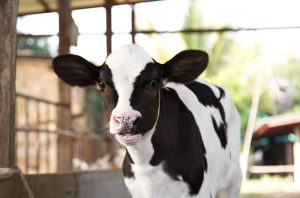
Agriculturalists are the original stewards of the land. When they take care of the land, it in turn, takes care of them and the animals that graze it. Grass is the key component in any grazing operation, especially in the summer. Tall fescue is the most widely adapted forage in the U.S. It is a persistent grass that is easy to establish, tolerant of a wide range of management regimes and produces good forage yields. However, it is a relatively low-palatability forage that can also result in poor animal performance.
It is estimated a majority of all fescue pastures in the U.S. are infected with the fungus endophyte that has been shown to adversely impact cattle performance. The organism, located within the plant, does not affect the growth or appearance of the grass and requires a laboratory analysis to detect.
Fescue is most common in the hotter, more humid areas of the U.S., but with proper management and stewardship, the challenge of endophyte-infected fescue can be prevented.
BioZyme® Inc. recognizes the challenges producers face when grazing fescue and battling summer heat simultaneously and has developed a mineral option to combat these difficulties. VitaFerm® HEAT® is a vitamin and mineral supplement that contains the precision-based prebiotic Amaferm®, Capsaicin and garlic to allow for enhanced animal performance and feed utilization during heat stress and fescue forage situations.
“We are very diligent about getting the fescue out of our fields with planned reseeding, but no matter what you do in our part of the country, you are going to have some endophyte-infected fescue,” said Jody Hockabay, owner of Elm Tree Farm with his wife, Michelle, Paris, Ky. “And as a result, some of the cattle don’t do very well on it. But the VitaFerm HEAT seems to have aided in that situation.”
Elm Tree Farm a renowned thoroughbred farm in Bourbon County. It dispersed its herd of registered Hereford cows several years ago, but still maintains about 100 commercial cows to graze the forages the horses can not get to over the expansive farm. Grazing and reseeding are just two ways that Elm Tree Farm manages the fescue on the rolling acreage; however, they know that the fescue is there to stay.
“Fescue is naturally occurring down here and if you let your fields grow up, consequently you will have some that heads out, so we will have some endophyte-infected fescue in there. We have seeded 400 acres in the last week with endophyte-free seed and a variety of clovers, rye, orchard grass, but you are still going to get some volunteer fescue especially on the horse farms, and we are a horse farm. It’s just a challenge. It’s just going to be there. You just have to manage the animals accordingly, and this product aids in the management significantly,” Hockabay said.
The cattle at Elm Tree Farm are on a VitaFerm mineral year-round with the Amaferm advantage to impact intake, digestibility and absorption, while helping improve the cows’ conception rates. However, about mid-April through the summer months, Hockabay will convert his herd from Concept•Aid® to the HEAT mineral.
“We find the VitaFerm products to be very beneficial, as our pregnancy rates increased very well. Then VitaFerm developed the HEAT mineral, and we started feeding that a couple years ago and we found that to be very beneficial with the black cows especially. In the middle of the day, we see more cows out grazing than we had in the past,” he said.
VitaFerm HEAT offers three key benefits.
Improved intake. Factors like high fiber content of forages are often associated with poor intake, but forage digestibility and crude protein levels are similar in endophyte-infected and endophyte-free fescue. Therefore, differences in performance on fescue pastures are strictly dependent on differences in intake. Amaferm stimulates animals to eat more consistently, consequently resulting in improved intake. Capsaicin, the natural form of chili pepper, also increases intake by allowing the animal to eat smaller meals more frequently throughout the day.
Improved heat tolerance. Both Amaferm and capsaicin are research-proven to maintain normal body temperature, allowing cattle to better combat heat stress and hyperthermia (above normal body temperature) commonly seen with fescue toxicity.
Insect control. Added garlic to deter insects and make HEAT even better suited as the go-to summer mineral.
When you are a steward of the land, you are in turn helping your livestock grow and thrive. Progressive cattleman and horse breeder Jody Hockabay grazes his cattle to make the land better for his horses, and he uses VitaFerm mineral products to make his cattle thrive and stay their healthiest on his fescue pastures.


